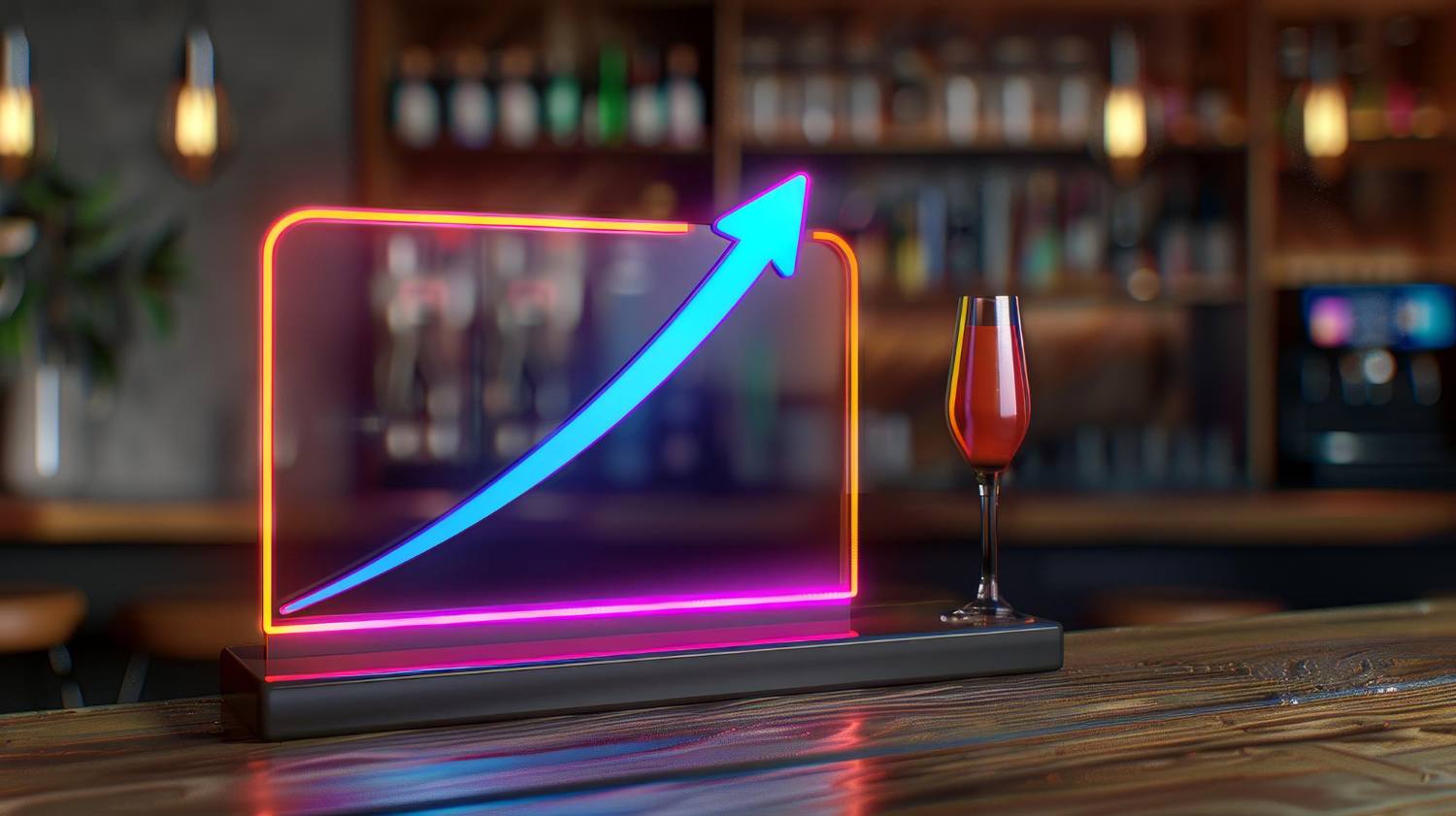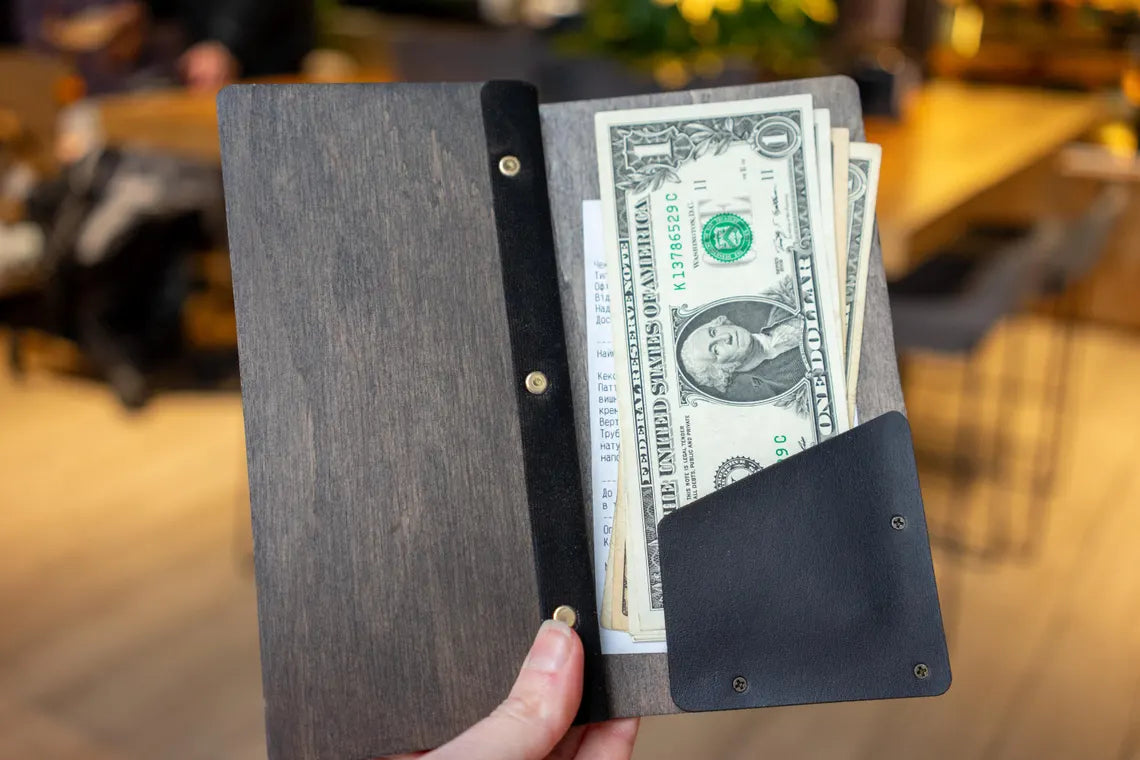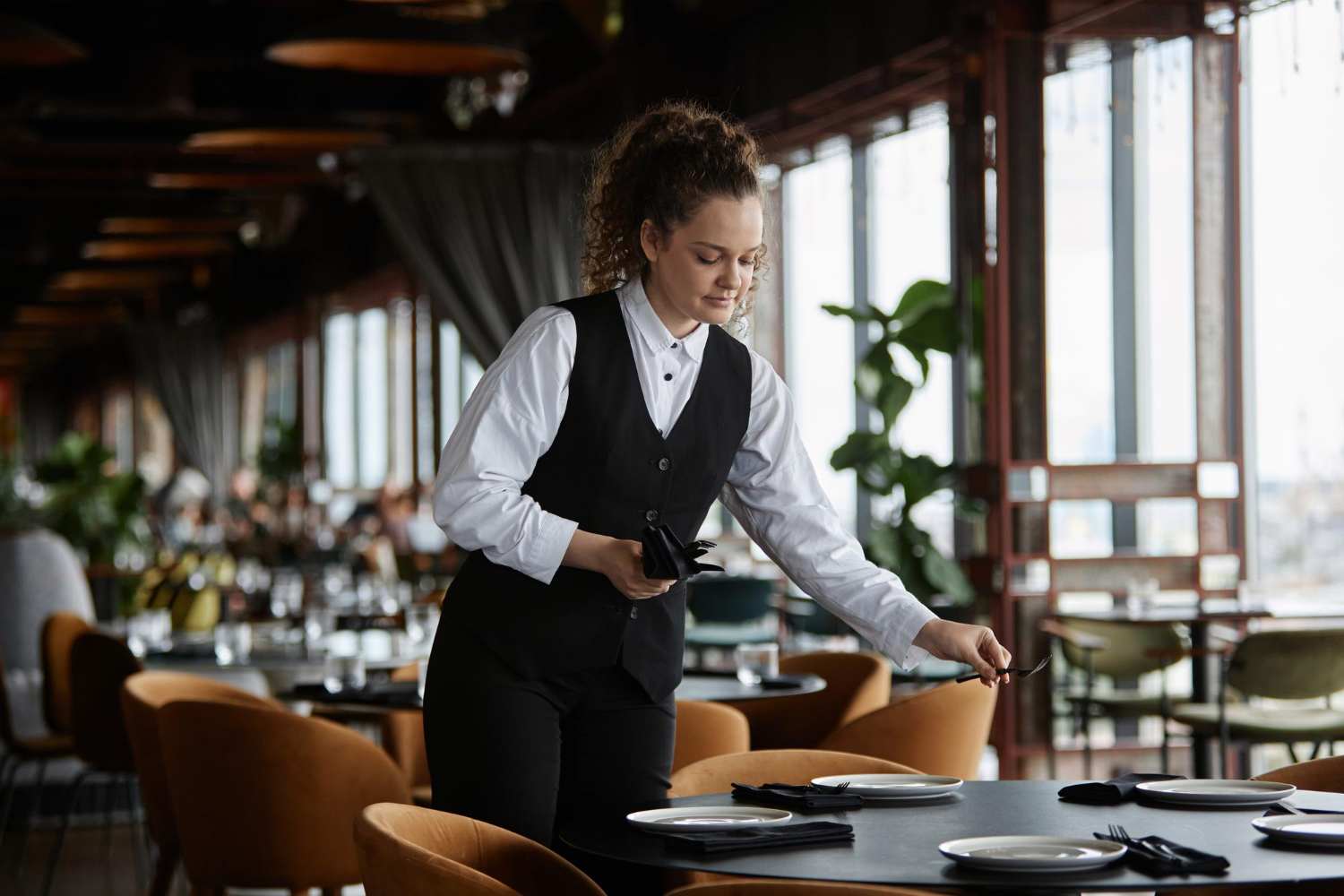Article: How to Increase Restaurant Sales: 10 Proven Strategies for 2025

How to Increase Restaurant Sales: 10 Proven Strategies for 2025

Increasing restaurant sales requires precision and strategy in an industry where average profit margins typically hover around 3-5%. The restaurant industry generated over $899 billion in sales in 2024, yet many establishments struggle to maximize their revenue potential while managing rising costs and evolving customer expectations.
Restaurant tips and tricks from previous decades need updating for contemporary market demands. This comprehensive guide presents 10 actionable strategies to boost sales in restaurant operations, applicable whether you operate a neighborhood bistro or manage multiple locations.
Key Takeaways:
- Menu Engineering - Position high-margin items in the upper-right quadrant where eyes naturally focus for 25% more attention
- Strategic Upselling - Boost sales 20-30% through natural conversation techniques and technology-assisted recommendations
- Operational Efficiency - Reduce ticket times by 2-3 minutes with workflow optimization and smart inventory management
- Digital Marketing - Generate 7x more clicks with complete Google Business Profiles and targeted local SEO strategies
- Loyalty Programs - Achieve 2x higher engagement through mobile-based systems and personalized reward offerings
- Events & Private Dining - Fill slow periods with premium-priced experiences that command higher profit margins
- Exceptional Service - Create lasting impressions that drive repeat visits and positive word-of-mouth referrals
How Do You Engineer a Menu That Sells Itself?
Your menu serves as your primary sales tool, capable of influencing customer behavior and maximizing revenue per guest. Strategic menu design guides customers toward high-margin items while enhancing their dining experience.
Strategic Visual Hierarchy
Eye-tracking research reveals that diners scan menus in predictable patterns. The upper-right quadrant receives 25% more visual attention than other areas. Position your highest-margin items in this prime real estate to capitalize on natural reading behaviors.
Create visual emphasis through strategic formatting. Use boxed callouts for signature dishes, slightly larger fonts for promoted items, and white space to draw attention. Avoid overwhelming customers—limit special formatting to 3-4 dishes per menu section.
Profit-Driven Descriptions
Replace bland descriptions with compelling sales copy. Change "chicken sandwich" to "herb-crusted free-range chicken breast with artisan aioli on freshly baked sourdough." This descriptive approach can increase item sales by up to 28%, according to research from Cornell University.
Sensory language triggers emotional responses. Words like "crispy," "tender," "smoky," and "creamy" help customers anticipate flavors. Include preparation methods like "wood-fired," "house-made," or "slow-braised" to suggest craftsmanship and quality.
Price Psychology
Price anchoring manipulates perception through strategic contrast. Include one or two premium-priced items to make your target dishes appear reasonably priced. A $45 wagyu burger makes an $18 specialty burger seem like exceptional value.
Menu length optimization directly impacts decision speed. Menus with 7-12 items per category perform best. Too few options limit revenue potential; too many create decision paralysis.
Professional Presentation
Menu covers significantly impact first impressions and perceived value. Wooden menu covers reflect restaurant personality while providing durability.
Consider QR code integration to complement physical menus without replacing them entirely. This hybrid approach maximizes flexibility while accommodating diverse customer preferences.

Why Do Smart Restaurants Use Hybrid Menu Systems?
Avoid forcing QR-only experiences. Offer both digital and physical options to accommodate diverse preferences. Position QR code signs prominently while maintaining backup menus for customers who prefer traditional formats.
Table-specific QR codes enable better service tracking and customer analytics. Each table's unique code provides data on table turnover patterns and helps optimize service timing.
Dynamic Menu Management
Real-time menu updates represent the most powerful advantage of QR codes. Change prices, add daily specials, or remove sold-out items instantly without reprinting costs. This flexibility maintains accuracy throughout service periods.
A/B testing capabilities enable menu optimization through data collection. Test different descriptions, prices, or item arrangements to identify what drives higher sales.
Payment Integration
QR code payments increase table turnover by 15% compared to traditional methods. Streamlined checkout eliminates waiting for servers to process payments, allowing faster table rotation and higher daily revenue.
Split payment functionality addresses group dining challenges. Digital systems can automatically divide bills while accepting multiple payment methods and efficiently calculate tips.
Data Collection Benefits
Digital ordering creates valuable customer insights. Demographic analysis reveals customer preferences and visit patterns that inform marketing strategies. Peak hour identification helps optimize staffing and inventory management through precise timing data.
Current restaurant trends show QR technology evolving to include augmented reality features, personalized recommendations, and loyalty program integration.
Which Upselling Tactics Feel Helpful Rather Than Sales-y?
Effective upselling can boost sales in restaurant operations by 20-30% without acquiring new customers. Success requires training, timing, and genuine value creation.
Natural Conversation Techniques
Train staff to suggest upgrades during organic conversation points. Replace "Would you like to make that a double?" with "Our house-made truffle fries pair perfectly with that entrée." This approach feels consultative rather than sales-driven.
Menu knowledge depth enables confident recommendations. Servers should be familiar with the flavor profiles, preparation methods, and pairing suggestions for every item.
Technology-Assisted Upselling
POS system prompts provide automated suggestions based on customer orders. When servers input wine selections, the system might prompt cheese board or dessert pairings.
Customer history integration enables personalized recommendations for repeat visitors. Previous orders showing spicy preferences can guide confident suggestions for hot sauce or jalapeño additions.
Value-Based Additions
Focus on items that genuinely enhance dining experiences. Premium ingredient upgrades like truffle oil, wagyu beef, or organic vegetables provide clear value that customers can taste.
Experience enhancements like tableside preparation or wine service create Instagram-worthy moments worth premium pricing.
Performance Tracking
Server performance analytics identify top performers and successful techniques. Share winning approaches during team meetings while tracking acceptance rates for different suggestions to refine training focus.

What's the Secret to Balancing Speed and Quality?
Operational efficiency directly impacts your ability to increase restaurant sales by serving more customers while reducing costs.
Kitchen Workflow Analysis
Bottleneck identification during peak hours reveals improvement opportunities. Time for each preparation stage to identify delays. Simple layout changes or equipment upgrades can reduce ticket times by 2-3 minutes, significantly increasing table turnover.
Station organization affects speed and quality. Arrange prep stations with the most-used ingredients within reach. Color-code cutting boards and organize tools by frequency of use.
Inventory Management
Data-driven forecasting reduces waste while ensuring availability. Analyze historical sales patterns, weather forecasts, and local events to predict demand accurately.
First-in-first-out protocols minimize spoilage costs while maintaining food safety. Digital inventory systems can track expiration dates and alert staff to items requiring immediate use.
Labor Optimization
Historical data scheduling matches staffing to predicted customer volume. Overstaffing destroys margins, while understaffing damages service quality.
Cross-training programs create operational flexibility. Staff who can work in multiple positions provide coverage during busy periods, thereby reducing scheduling complexity.
Table Turnover Management
Service pacing analysis optimizes dining experiences while maximizing capacity. Lunch tables should turn every 45-60 minutes, while dinner allows 90-120 minutes. Train servers to read table cues and adjust pacing accordingly.
How Do You Attract Diners Through Online Visibility?
Strategic digital marketing creates sustainable competitive advantages in local markets while building community relationships.
Local SEO Mastery
Google Business Profile optimization serves as your digital storefront. Complete profiles with current hours, high-quality photos, and accurate information receive 7x more clicks than incomplete listings. Restaurants with 200+ reviews typically rank in the top three local search results.
Keyword research identifies how local customers search. Target phrases like "best Italian restaurant [city name]" rather than generic terms.
Social Media Strategy
Platform-specific content maximizes engagement. Instagram favors high-quality food photography, while Facebook performs better with behind-the-scenes content and community engagement.
User-generated content provides authentic marketing material. Create hashtags, encourage photo sharing with incentives, and repost customer content with permission.
Review Management
Response strategies for both positive and negative reviews demonstrate professionalism. Thank positive reviewers specifically while addressing negative feedback with solutions and return invitations.
Review generation campaigns increase volume through systematic outreach. Train staff to request reviews from satisfied customers through conversation or follow-up emails.
Email Marketing
List-building strategies capture contact information through value-added incentives. Offer exclusive discounts or birthday promotions in exchange for email addresses.
Segmentation tactics enable targeted messaging based on customer behavior and preferences. Personalized messages achieve higher open rates than generic broadcasts.

Which Reward Structures Keep Customers Coming Back?
Customer retention costs 5x less than acquisition while generating higher lifetime values. Strategic loyalty programs turn occasional visitors into regular customers.
Points-Based System Design
Earning structure simplicity encourages participation. Award one point per dollar spent, with bonus points for specific items or slow periods. Make redemption straightforward with clear value propositions.
Tier benefits provide advancement incentives. Bronze members receive birthday discounts, Silver members get priority reservations, and Gold members enjoy exclusive menu previews and complimentary items.
Technology Integration
Mobile app development provides convenient access while enabling push notifications. Smartphone-based programs see 2x higher engagement than card-based systems.
POS system integration automatically tracks purchases and applies rewards without separate processes. Seamless integration reduces staff workload while ensuring accurate point accumulation.
Personalization Strategies
Purchase history analysis enables relevant reward offerings. Vegetarian customers receive plant-based specials rather than steak promotions. Wine enthusiasts get tasting event invitations.
Surprise reward delivery creates emotional connections that drive word-of-mouth marketing. Occasional unexpected rewards like free desserts delight customers and generate positive reviews.
Why Should You Build Direct Ordering Instead of Relying on Apps?
Delivery and takeout represent significant growth opportunities. Strategic off-premise expansion can boost sales in restaurant operations while reaching new customer segments.
Optimized Takeout Menu Development
Travel-friendly item selection ensures quality maintenance during transport. Not every dish translates well—create separate takeout menus featuring items that arrive in optimal condition.
Packaging investment protects food quality while reinforcing brand identity. Quality containers prevent leaks, maintain temperature, and present food appealingly. Eco-friendly options demonstrate corporate responsibility.
Direct Ordering Platforms
Commission avoidance strategies retain more revenue from off-premise sales. Third-party apps charge 15-30% commission. Build direct ordering capabilities through your website to capture full revenue.
User experience design must be intuitive and mobile-optimized. Include clear photos, detailed descriptions, and estimated preparation times.
Delivery Operations
Delivery zone optimization balances coverage with efficiency. Analyze order data to identify profitable service areas based on frequency, values, and costs.
Quality control systems ensure food arrives in acceptable condition. Develop packaging protocols and delivery procedures that preserve food quality during transport.
Bundle Strategies
Creating family meals increases average order values. Develop prix fixe takeout menus serving multiple people with attractive bundle pricing.
Occasion-based packages target specific needs like date nights or business lunches. These specialized options command premium pricing while simplifying ordering decisions.

Why Should You Host Events and Private Dining Experiences?
Events fill slow periods while commanding premium pricing, making them powerful tools to increase restaurant sales.
Event Space Design
Modular space configuration maximizes utility across different event types. Invest in moveable partitions, modular furniture, and flexible lighting systems that adapt to various occasions.
Audio-visual equipment supports presentations and celebrations while justifying premium pricing. Basic projector systems and quality sound enable corporate meetings and special events.
Event Package Development
Corporate partnership packages provide steady revenue through regular business relationships. Develop lunch meetings, training sessions, and holiday party offerings that meet business needs.
Celebration packages target personal milestones. Create birthday parties, anniversary dinners, and graduation celebrations with set pricing and customization options.
Booking Management
Deposit requirements reduce no-shows while guaranteeing revenue. Require 25-50% deposits with clear cancellation policies that protect your business.
Event management software streamlines booking while maintaining detailed communications. Digital systems track event details, menu selections, and payment schedules.
Marketing Strategies
Corporate outreach builds relationships with local businesses. Target companies with 50+ employees for regular bookings through personal sales calls.
Social media showcasing demonstrates capabilities while inspiring future bookings. Share event photos while maintaining guest privacy.
How Do You Turn Raw Data Into Actionable Insights?
Data-driven decisions consistently outperform intuition-based choices. Strategic analytics reveal opportunities while preventing costly mistakes.
Sales Pattern Analysis
Historical performance tracking identifies busy periods for optimal resource allocation. Peak period identification enables premium pricing, while slow periods benefit from promotional strategies.
Weather correlation analysis reveals how external factors affect customer behavior. Track how temperature and precipitation impact dining preferences and visit frequency.
Menu Performance Analytics
The item profitability ranking identifies which dishes generate the highest margins relative to their popularity. Focus promotional efforts on high-margin items while reconsidering poor performers.
Customer preference mapping shows which demographic groups prefer specific items. Use this information for targeted marketing and new menu development.
Technology Integration
POS system optimization captures detailed transaction data for comprehensive analysis. Modern systems provide real-time reporting and alerts for immediate operational adjustments.
Automated reporting delivers regular updates highlighting key metrics and trends requiring attention.

How Do You Balance Technology With Human Hospitality?
Outstanding service creates lasting impressions that drive repeat visits, positive reviews, and word-of-mouth referrals.
Staff Training
Service standards create consistent experiences regardless of the team member. Develop detailed procedures for greeting guests, taking orders, delivering food, and handling payments.
Product knowledge depth enables confident recommendations. Servers should understand ingredients, preparation methods, and allergen information for every menu item.
Problem resolution protocols turn negative situations into positive experiences. Train staff to acknowledge problems quickly and offer solutions that exceed expectations.
Atmosphere Management
Lighting optimization affects customer comfort and perceived value. Bright lighting encourages faster dining for lunch; dimmer lighting creates intimate dinner atmospheres.
Music programming influences customer behavior. Slower tempos encourage longer stays and higher spending, while upbeat music increases table turnover.
Personalization Systems
Regular customer recognition creates emotional connections. Train staff to remember names, preferences, and special occasions for frequent guests.
Special occasion acknowledgment provides memorable experience opportunities. Offer complimentary desserts for birthdays or anniversary congratulations.
Technology Enhancement
Mobile ordering convenience allows customers to skip wait times while maintaining personal service. Payment flexibility accommodates different preferences through multiple payment options.
Feedback Collection
Multi-channel feedback gathering captures opinions through comment cards, online reviews, and direct conversation. Response optimization demonstrates attentiveness through quick, professional responses to all feedback.
How Will Your Restaurant Adapt to 2025 Market Demands?
Successfully learning how to boost sales in restaurant operations comes down to execution. Start with menu engineering and staff training—these deliver immediate results with minimal investment. Then gradually layer in technology, expand off-premise channels, and refine based on data.
The restaurants thriving through 2025 aren't choosing between technology and hospitality—they're using digital tools to enhance human service. KyivWorkshop proves this balance, creating custom menu covers that maintain tactile quality while restaurants adopt QR codes and digital systems.
Pick 2-3 strategies from this guide, implement them completely, then expand. Track your metrics monthly and adjust based on real performance, not assumptions. The 15-30% revenue increase is achievable when you commit to systematic improvement rather than scattered changes.
Your next step: Review your current menu tonight. That's where most quick wins hide.




Leave a comment
This site is protected by hCaptcha and the hCaptcha Privacy Policy and Terms of Service apply.